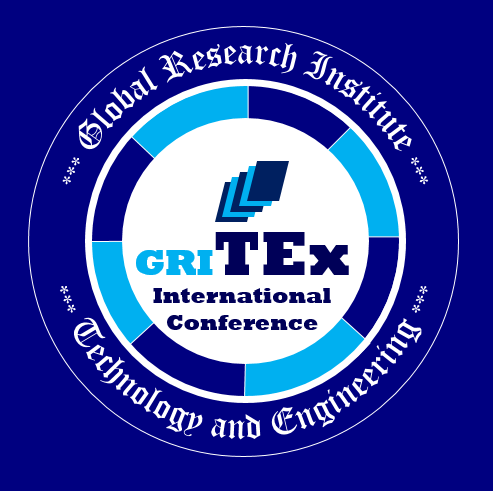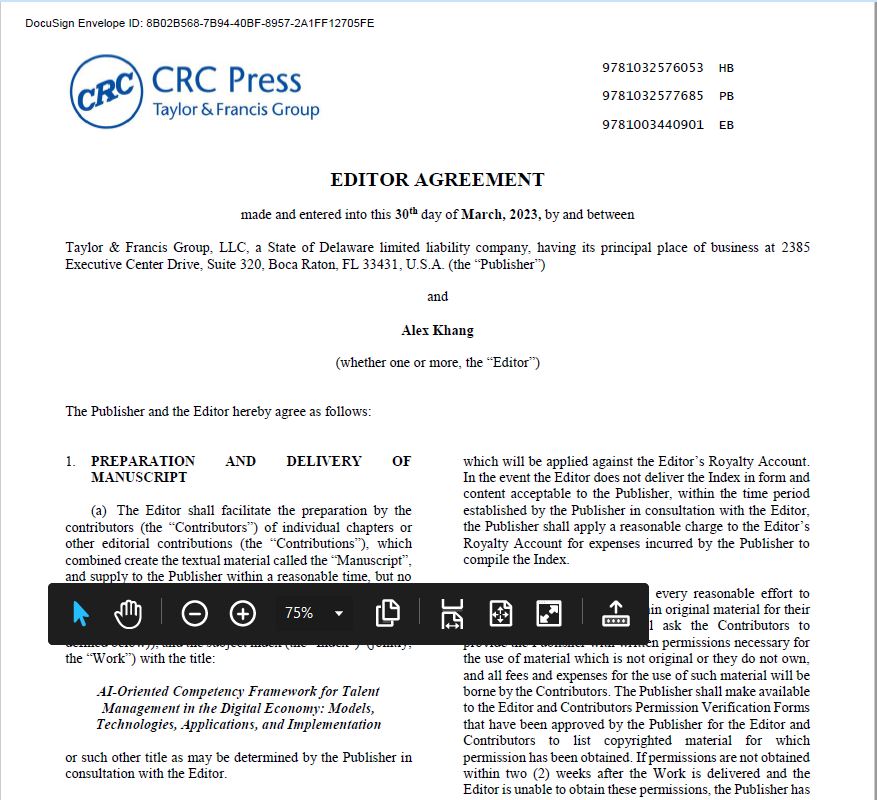
Global Research Institute of
Technology and Engineering
Home | About GRITEx | Research | Education | Publication | Contact Us

Global Research Institute of
Technology and Engineering
Home | About GRITEx | Research | Education | Publication | Contact Us

AI-oriented Competency Framework (AIoCF) is one of highest prioritized concerns of business management board in the digital economy right now and it can be used in most HCM applications. With this hand book, you’ll be able to implement the modern competency framework, role-based skills taxonomy system, skills-based competency framework, role-based skills models or patterns, competency-based job descriptions, competency-based job assessments, job assessment tool, role-based learning pathways, skills-based career cluster & pathway, performance appraisal system, skills-based interview models, AR and VR in enterprise educational system 4.0, AI application in career development ecosystem, RPA applications, data analytics, and visualization to support planting activities, to manage tasks, to predict outcomes, to forecast risks, to make informed decisions that facilitate improving in the various services and production activities in the field of software development, software outsourcing, manufacturing, medical and healthcare, education, finance services, banking services, retails, government department, etc.
This hand book targets a mixed audience of students, engineers, scholars, researchers, academics and professionals who are learning, researching, and working in the field of workforce, human resource, training, requirement, headhunting, outsourcing, and manpower consultant services for different cultures and industries in the era of digital economy.
We really believe that the technologies and applications of the AI-Oriented Competency Framework for Talent Management in the Digital Economy: Models, Technologies, Applications, and Implementation book will favor the people's aspirations.
The goals of this book will share with readers the modern models, emerging technologies, designs, frameworks, theories, practices, and sustainable approaches to design, implement, and maintain the challenging issues associated with the leveraging of technologies related to applications of Artificial Intelligence (AI), Internet of Things (IoT), and automatic techniques for Talent Management (TM) and Human Capital Management (HCM) systems in the era of Digital Economy. You are invited to contribute chapters and papers and the scope of the book includes but is not limited to the following topics:
All Taylor & Francis (T & F) publications have a direct feed (indexed) to WoS and Scopus and newly submitted contents are submitted monthly. At present, WoS contains 10,000+ books and T & F in the top ten contributing publishers.
AI-Oriented Competency Framework for Talent Management in the Digital Economy: book proceedings will be published by CRC Press, Taylor & Francis Group, Florida, USA
All questions about submissions should be emailed to
